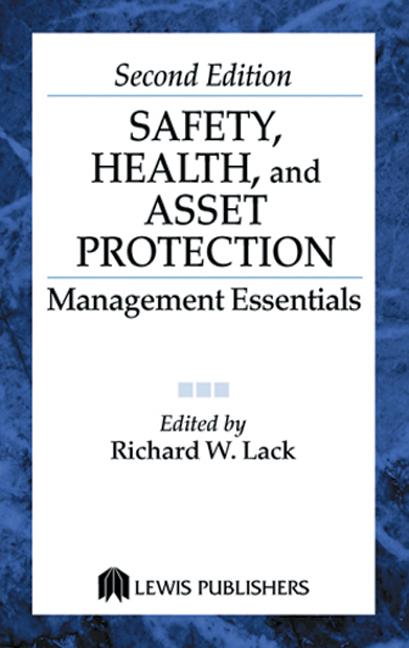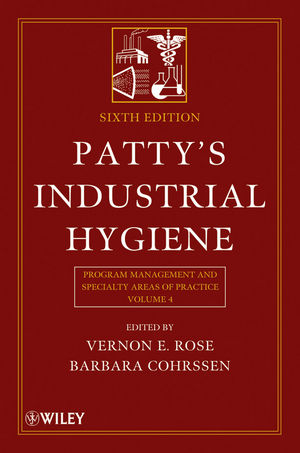Back in the Stone Age, when I first began writing about workplace safety and health for ISHN, I almost immediately came across the admonishment that safety and health professionals must “talk management’s language” if they want to get anywhere. Over the decades that counsel took on various definitions. Make the business case for safety. Align with corporate values. Protect the brand. Use emotional intelligence. Get an MBA. Don’t live in a silo. Don’t talk techno-jargon. Go beyond compliance.
Of course the business world has changed over time in many ways. One change you may or may not know about is the revolution in accounting. Non-financial factors are accepted, or in the process of being accepted, as “material” to the long-term profitability of companies. In a 2013 survey of more than 160 investors, analysts and portfolio managers, Ernst & Young reported nine out of ten respondents said that non-financial performance was a key to their investment decisions at least once in the past 12 months.
Six pillars
What lies beyond the traditional financial information found in annual reports? In the 2014 book “Six Capitals, or Can Accounting Save the Planet?” the author describes six pillars that create value for an organization. They are: 1) Financial (economic resources available to produce goods or provide services); 2) Manufactured (buildings, equipment, tools and technology to produce goods or provide services); 3) Intellectual (employee knowledge, including patents, copyrights, software and licenses); 4) Human Capital (employees’ skills, experience, motivation, intelligence, health, productivity and willingness to engage, innovate and problem-solve); 5) Social and Relationship Capital (employees sharing norms, common values, behaviors, trust in the organization and its brand and reputation); and 6) Natural Capital (all renewable and non-renewable environmental resources – air, water, land, minerals, forests, bio-diversity and eco-system health that support the profitability of an enterprise).
Defining ESG
Along similar lines, the Sustainability Accounting Standards Board (SASB) lists five categories that impact a business’s ability to create and sustain value. They are: 1) Environment; 2) Social Capital; 3) Human Capital; 4) Business Model and Innovation; and 5) Leadership and Governance. These non-financial key performance indicators go by the acronym “ESG” – environment, social and governance. Since 2010, the global investment firm Goldman Sachs has published an annual ESG Report.
Goldman Sachs’ 2015 report focuses on six areas of ESG emphasis: promoting clean energy; developing technology such as open sourcing, the Internet of Things, artificial intelligence, the driverless car; empowering women entrepreneurs; developing commercially-vibrant communities with access to housing, education, healthcare and jobs; critical thinking about societal trends such as millennials coming of age; and implementing an ESG impact investing portfolio.
Fluency matters
The accounting revolution, this emphasis on non-financial key performance indicators, can be a game-changer for safety and health professionals — if you can speak the new language. Professionals are guardians of human capital — protecting employees’ safety and ensuring their well-being. A safe and clean work environment, wellness programs, training and participatory processes (audits, recognition and awards activities, hazard identification and means of mitigation, etc.) go a long way to building and sustaining worker trust, engagement and productivity.
Internal and external impact
Best-in-class safety and health processes and performance (in terms of both process / activity outputs and key performance indicator outcomes) strengthen the social ties that bind successful organizations. This occurs both internally and externally. Safe workplaces help attract and retain talented employees. They contribute to cohesive cultures, shared values and a sense of purpose. Beyond the fence line, safe workplaces are welcomed and respected in communities.
When it comes to the “G” in ESG non-financial impacts — how an organization is governed, its ability to motivate employees and earn the trust of community neighbors, politicians, regulators, shareholders, analysts, activists and the media -- good safety and health practices are a benchmark of discipline, integrity, compliance and leadership.
New terminology
So here’s a sampling of the new vocabulary of managers: materiality, value creation, social or environmental impact investing, integrated financial and non-financial reporting, ESG, human capital, social relationships and governance. These terms were not on the lips of managers decades ago. It’s time to update your c-suite dictionary.
And it’s time to update your definition of sustainability — if you already haven’t. More than a few professionals believe sustainability is a total waste of time and money. It’s corporate propaganda or “greenwashing.” Superficial feel-good initiatives signifying nothing. But one corporate safety and health consultant says: “I don’t believe that holds true anymore. In the past four or five years facilities I work with have metrics for energy conservation, water use, recycling and safety and health performance. It’s all tied together.”
Or as Douglas Y. Park, who has a law degree from the University of Michigan, a Ph.D. from Stanford, and a sociology degree from Harvard wrote in a 2015 article: “As sustainability increasingly enters the boardroom conversation, it is helpful to recognize that non-financial factors are like financial factors in that they have tangible effects on the business.”
One veteran safety and health consultant, a former plant manager, translates this into safety-speak: “Our living assets must be secure. What does it take for your organization to relentlessly pursue a zero incident safety culture as foundational to its sustainable business strategy? Status quo is not sustainable in the long run.”
Quick quiz on the new language: What is all this talk about? If you answer how safety and health relates to value creation and integrated reporting – maybe toss in transparency and materiality (tangible effects) — you’re learning fast. Welcome to sustainability 2.0 and the new world of talking management’s language.







